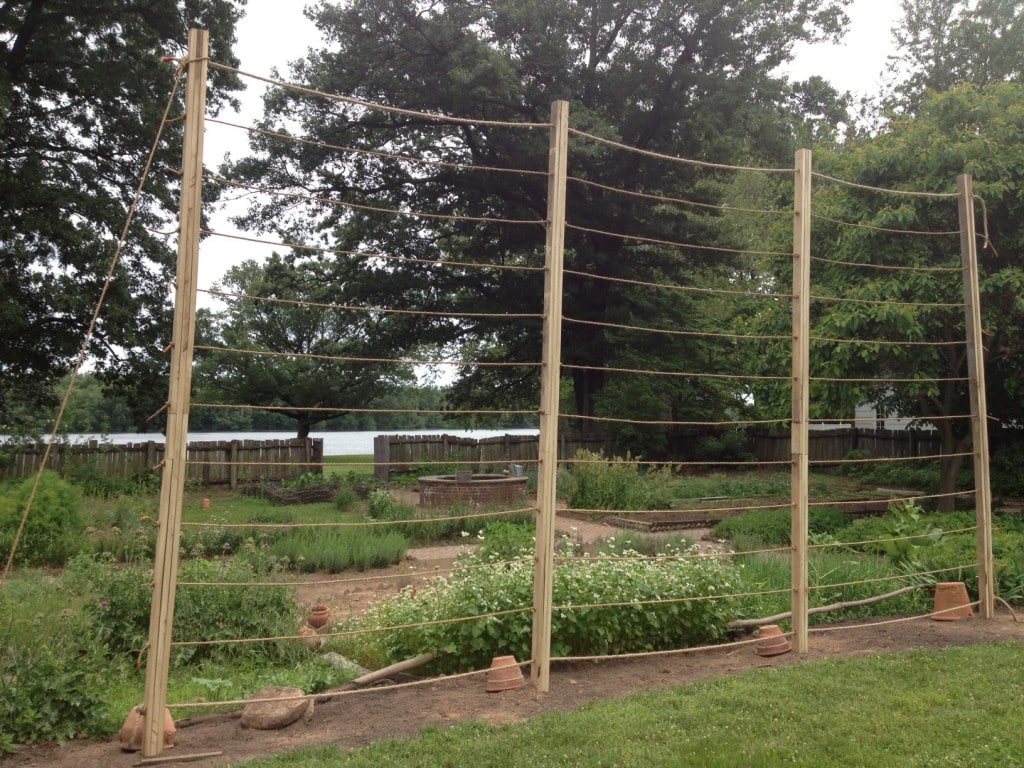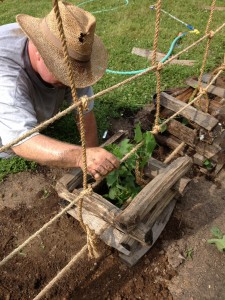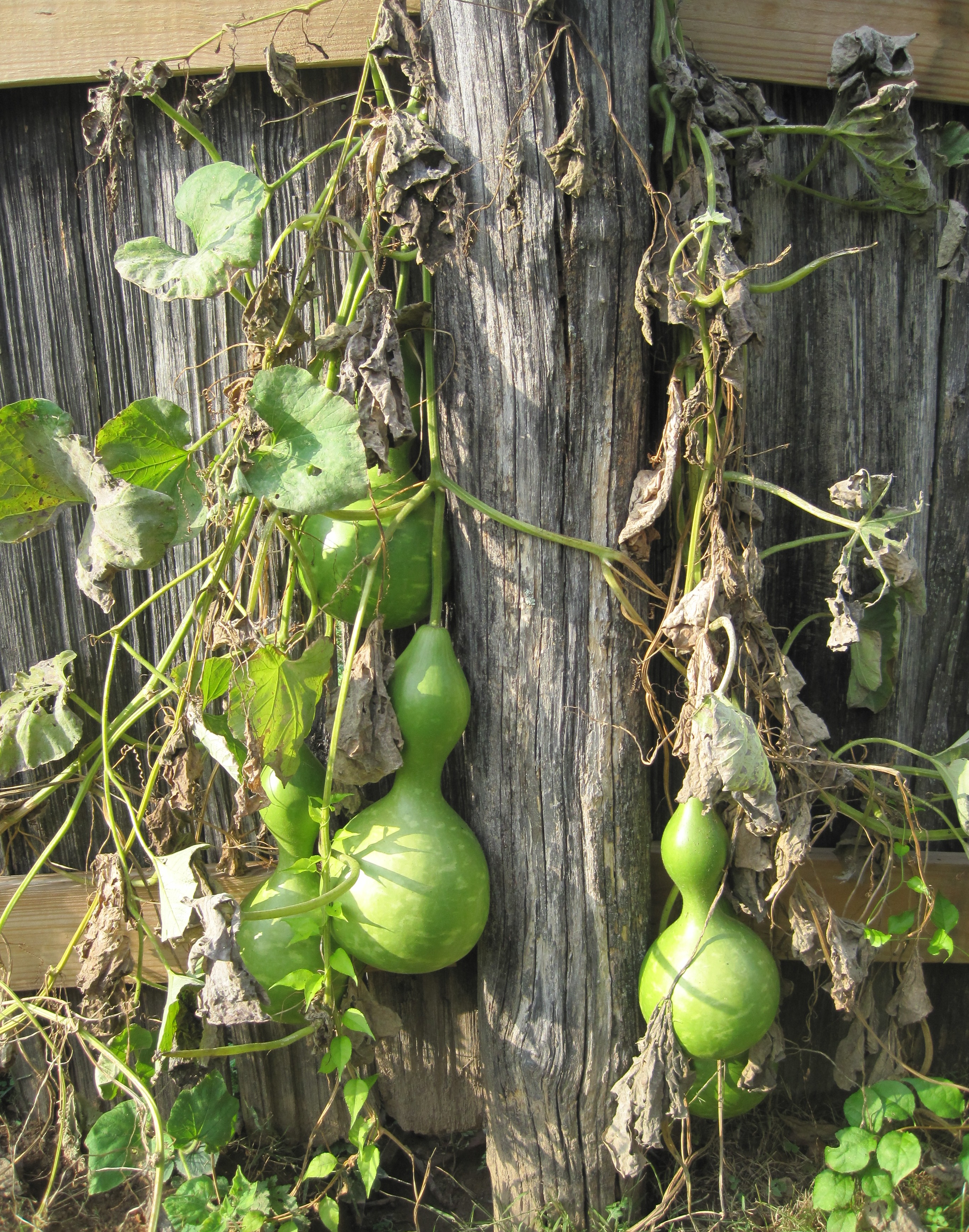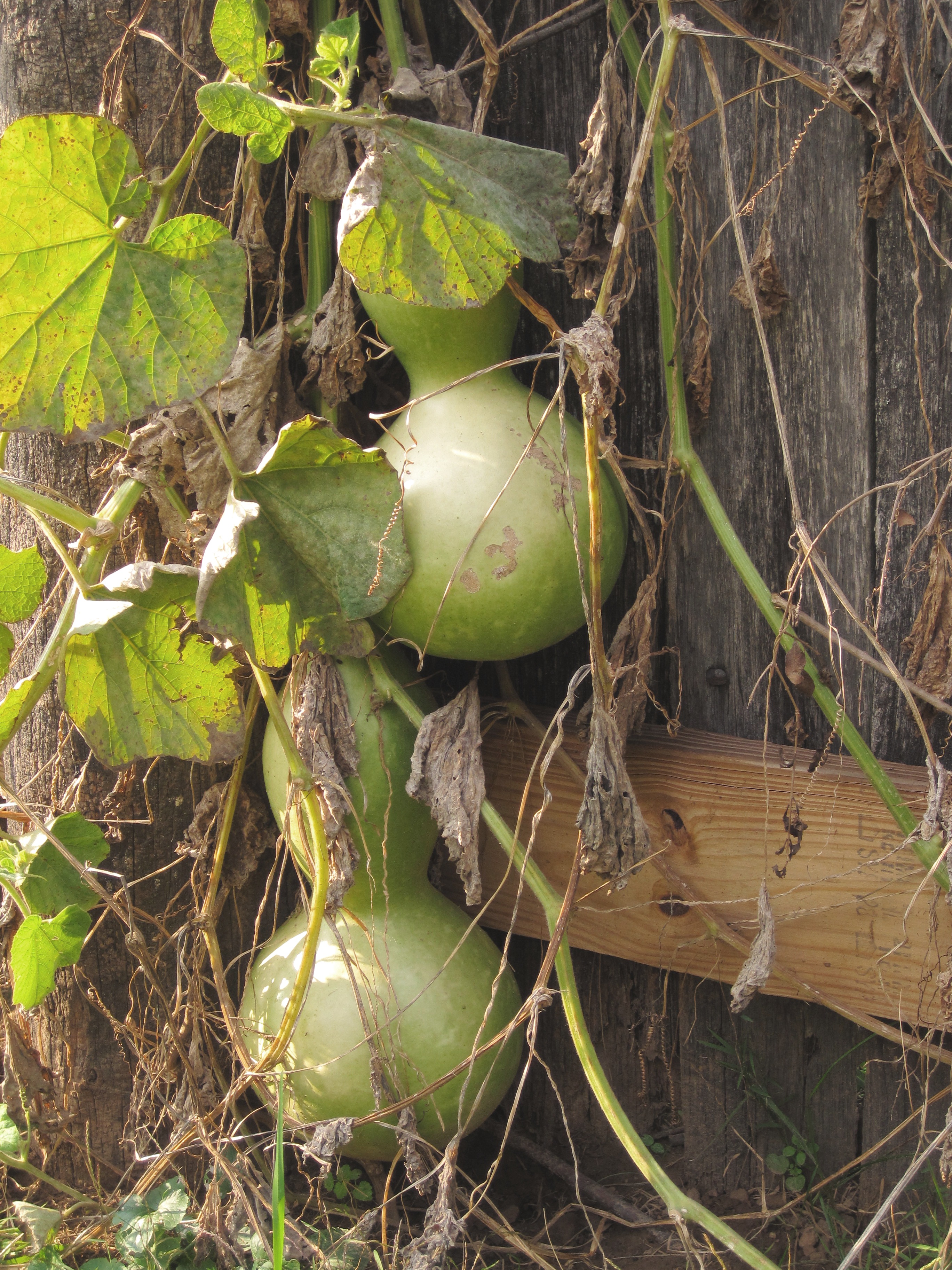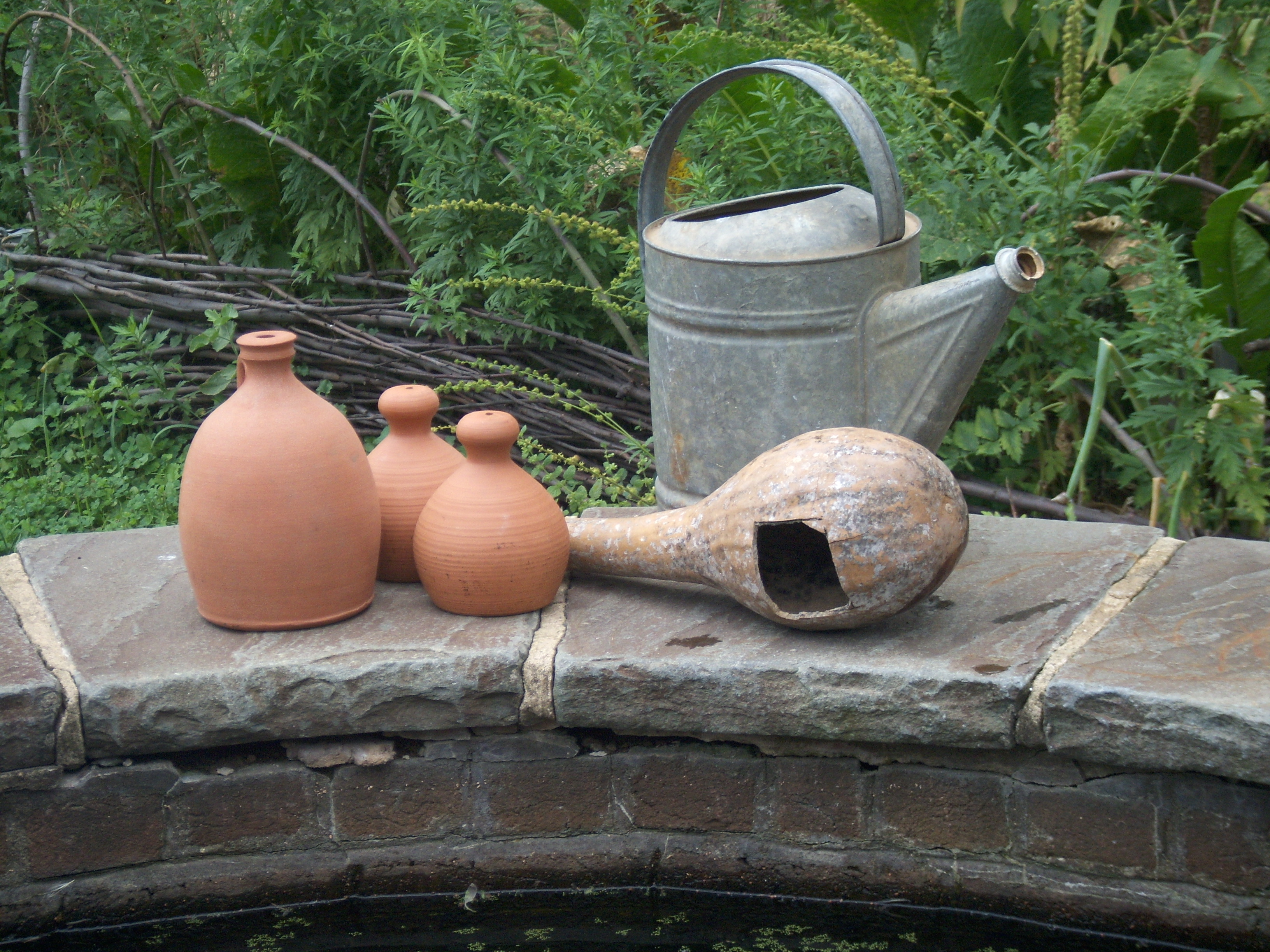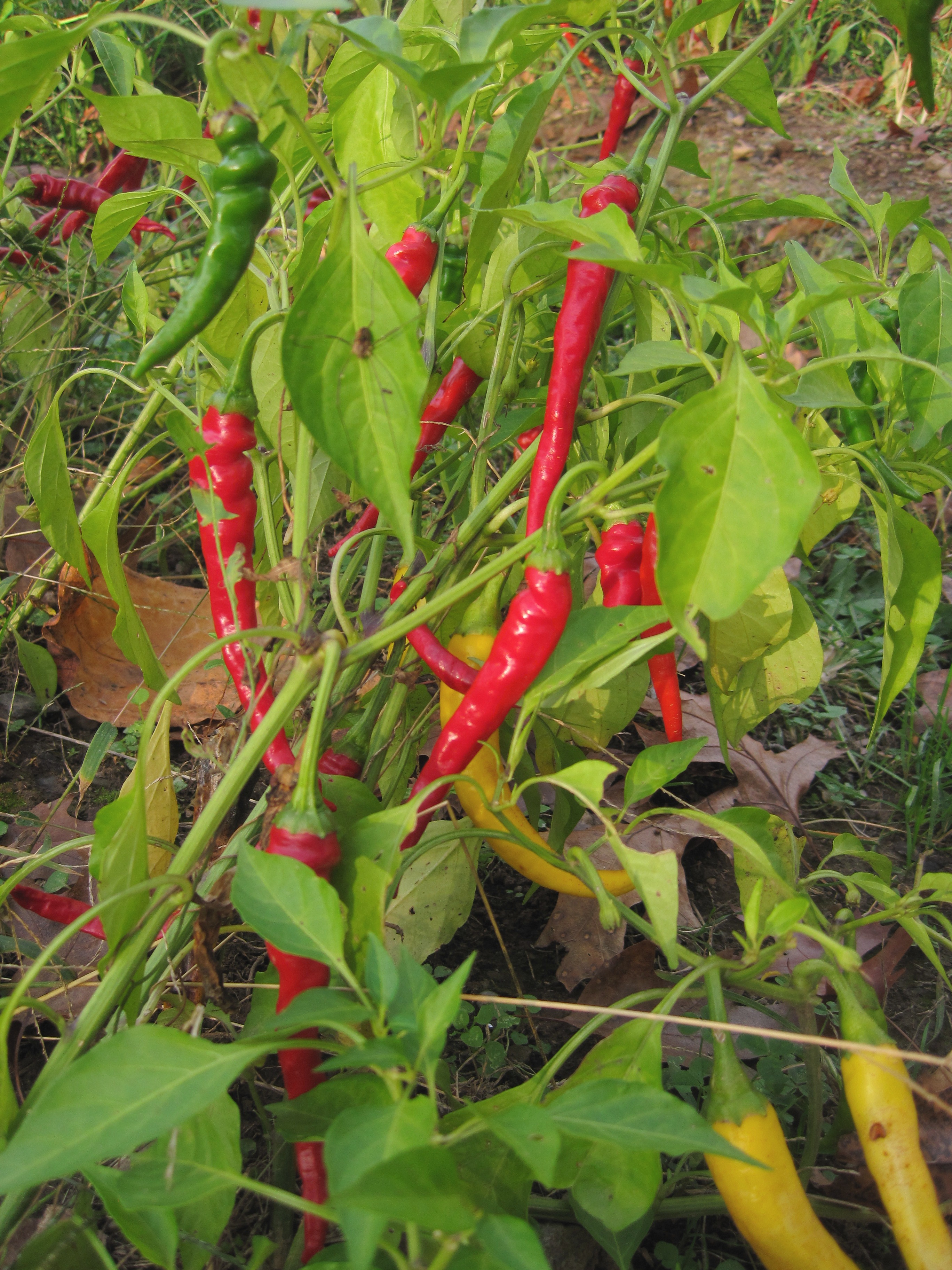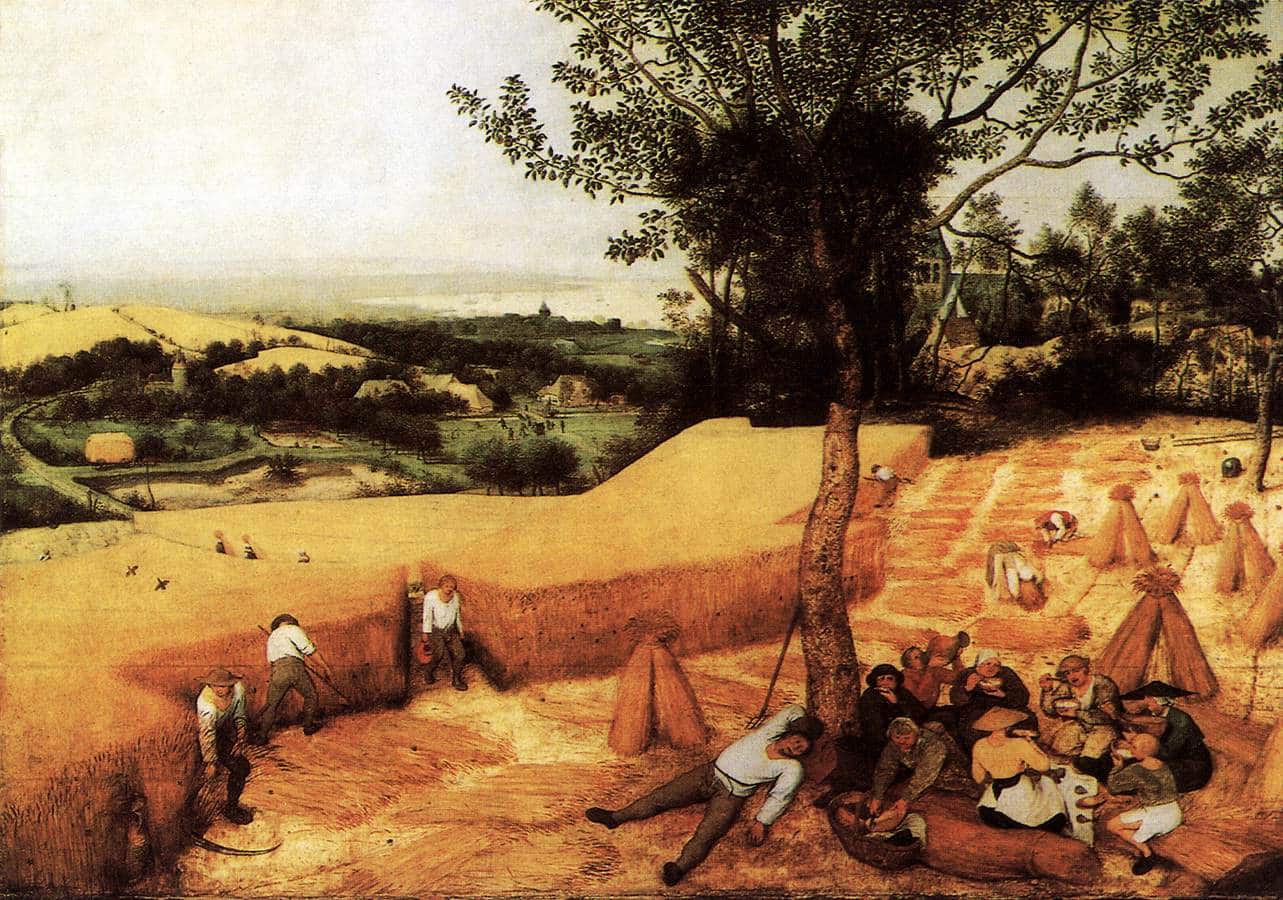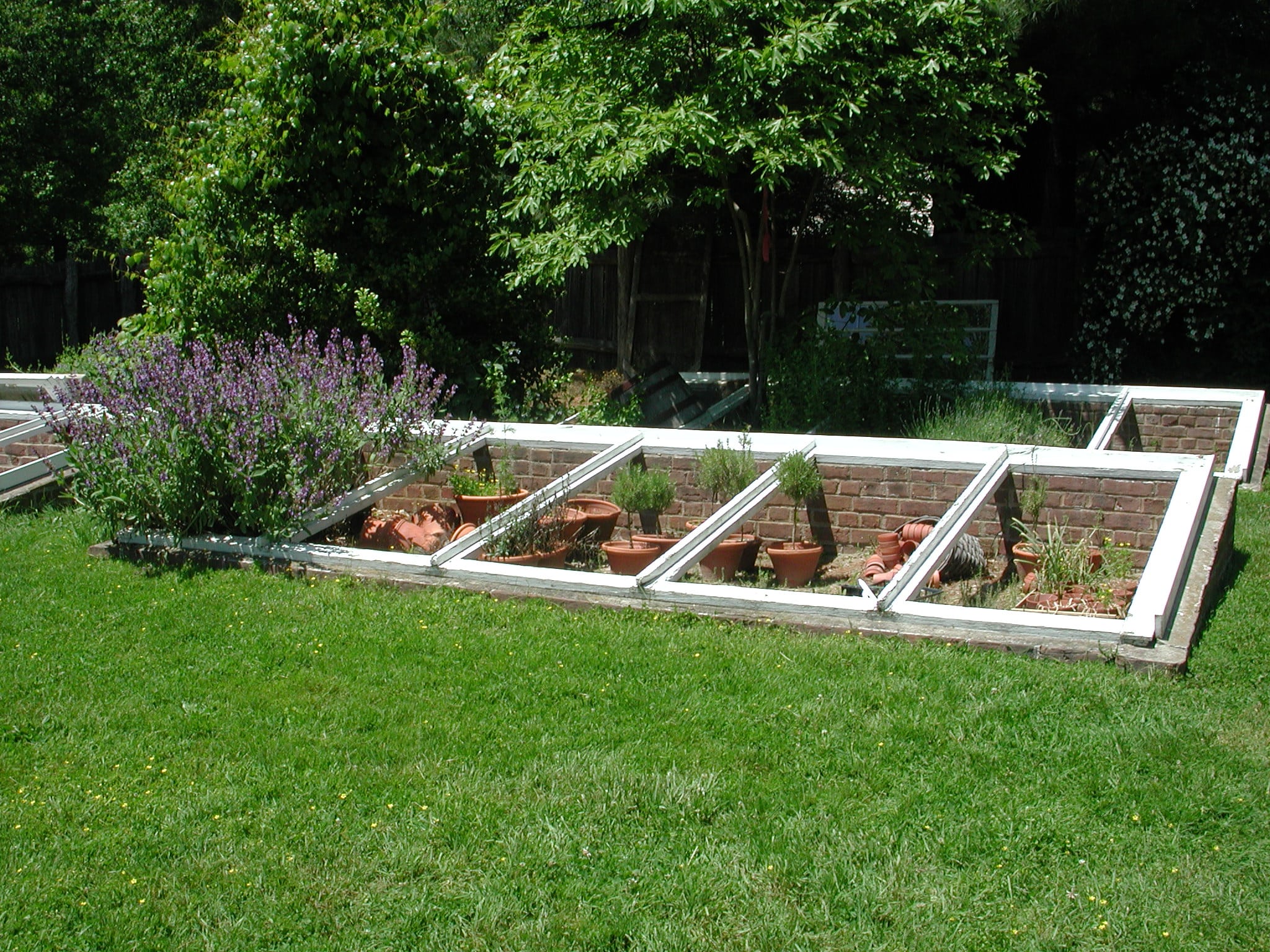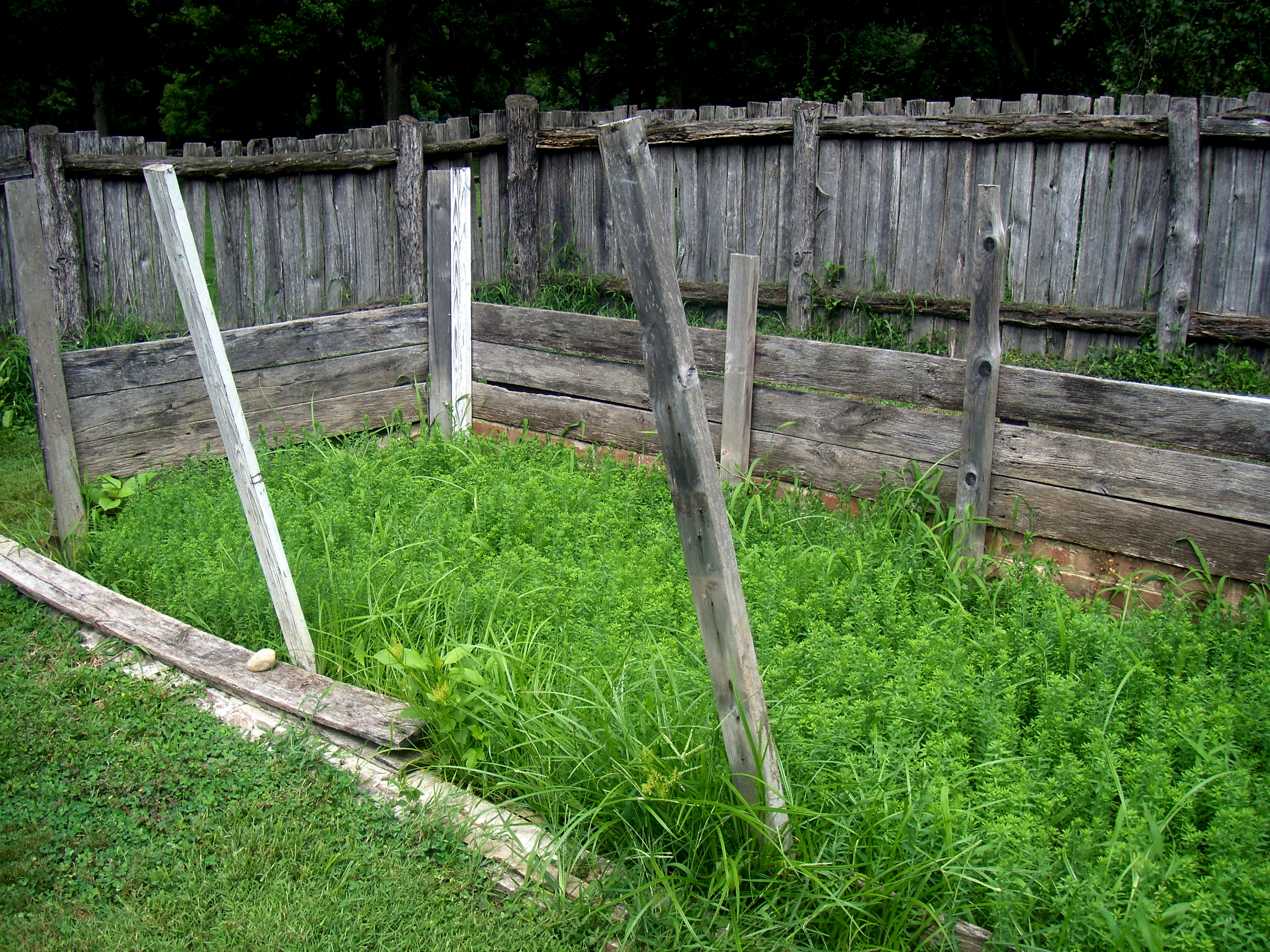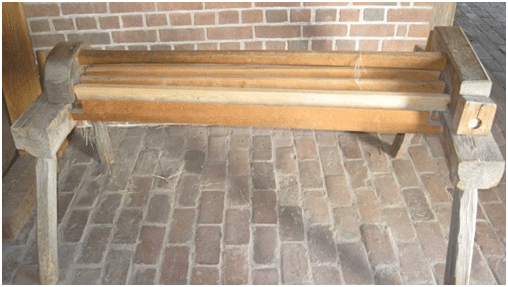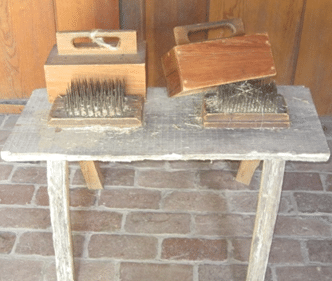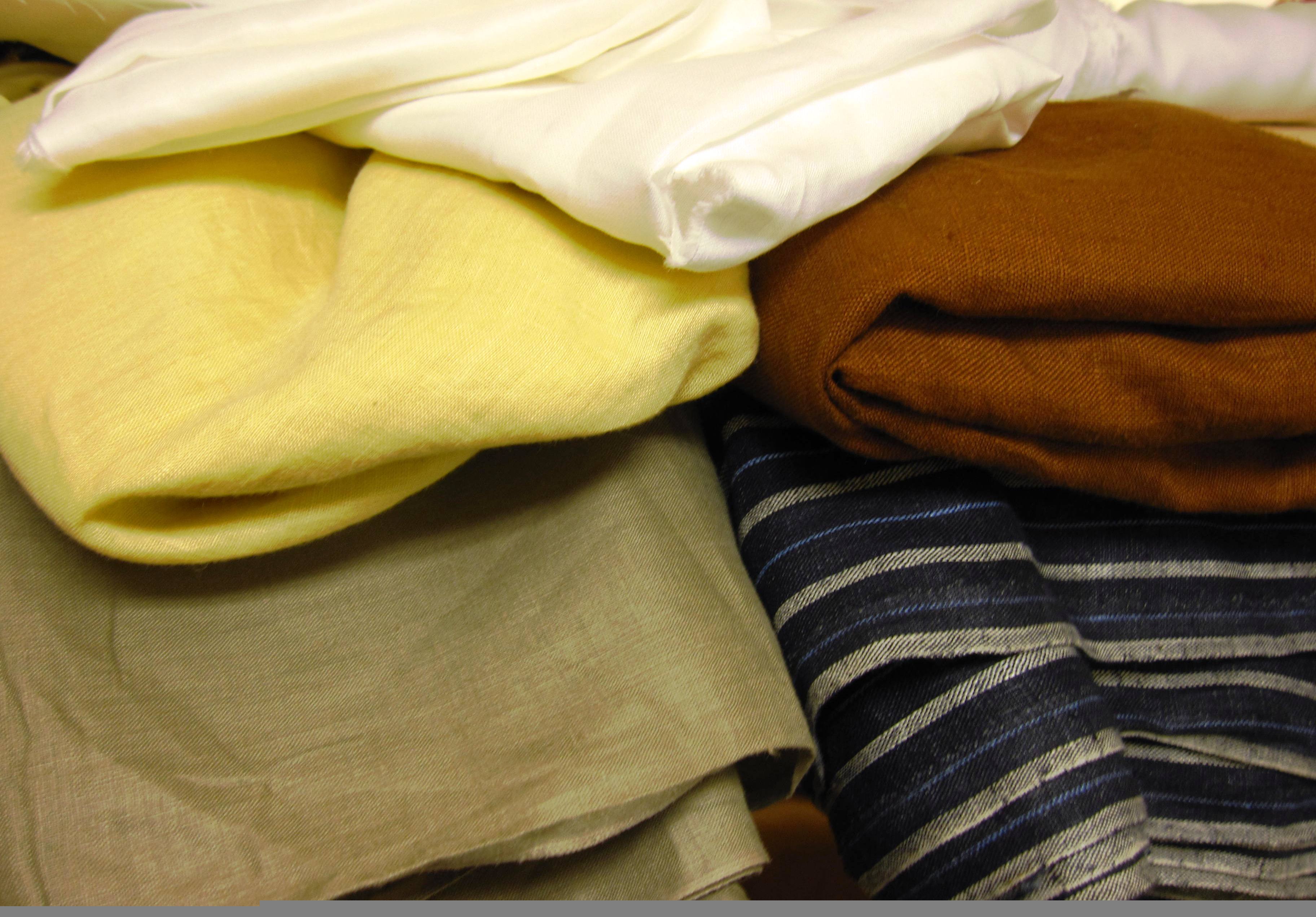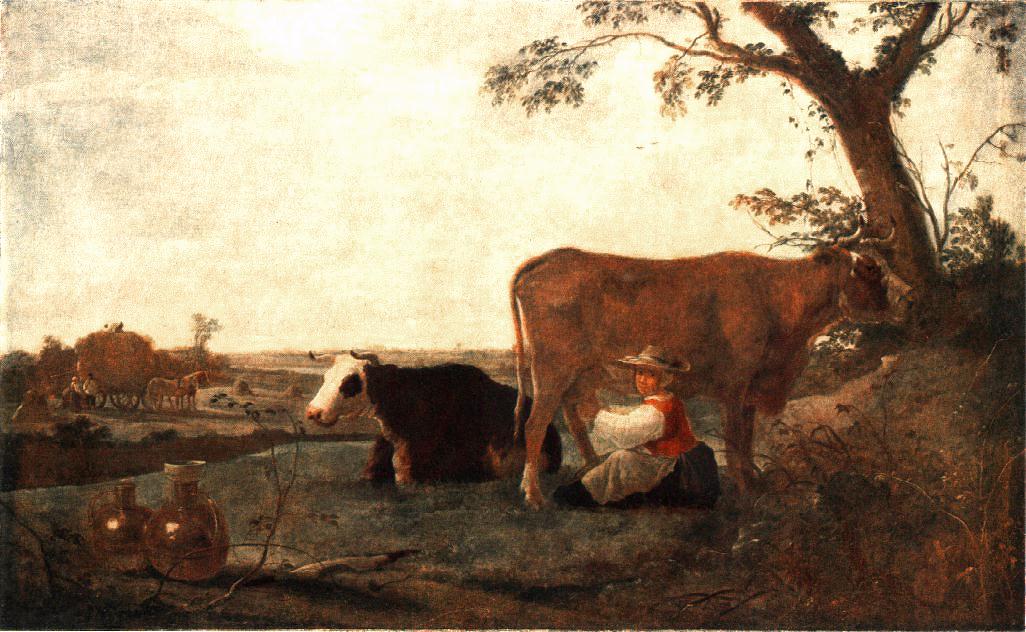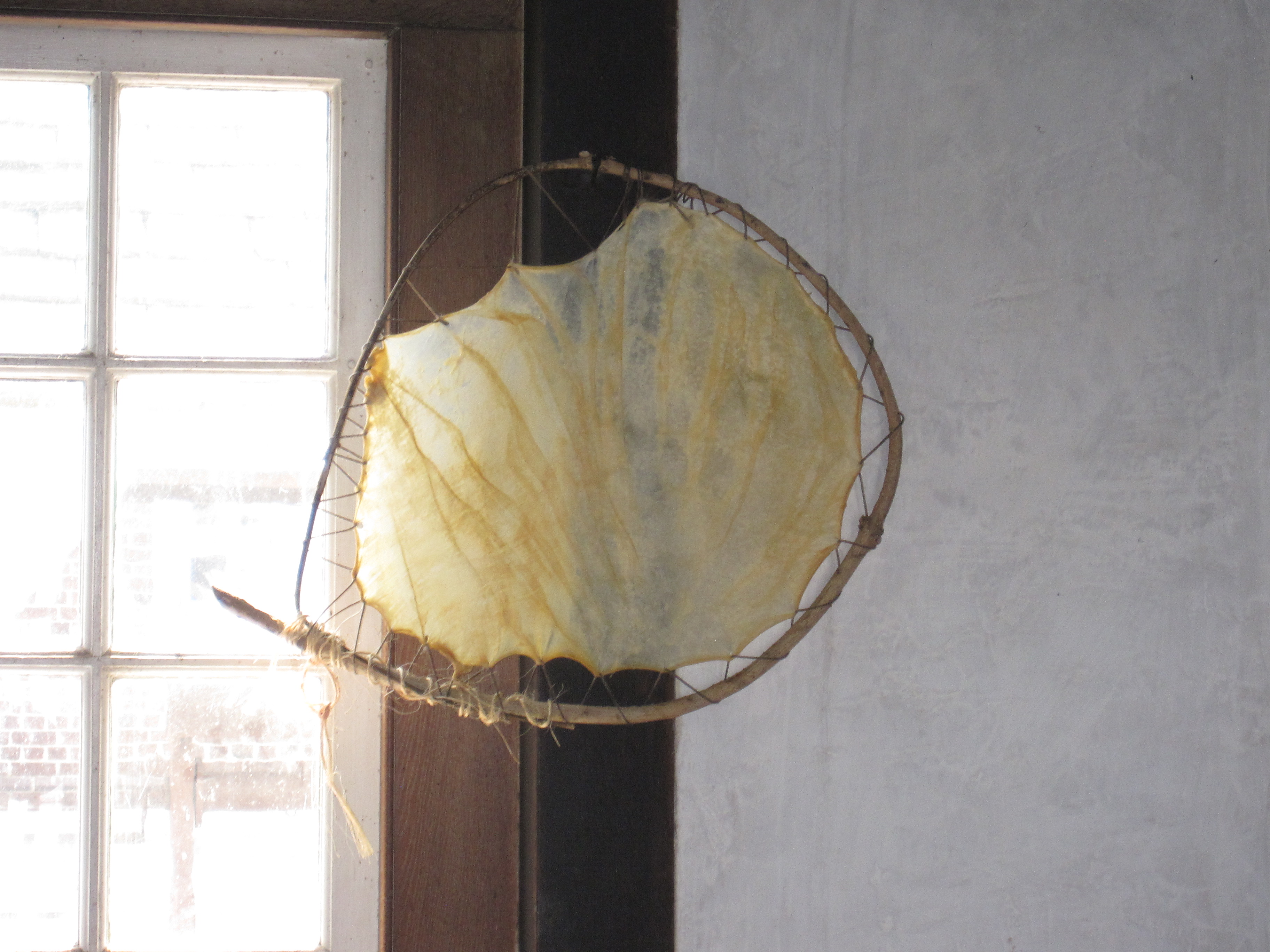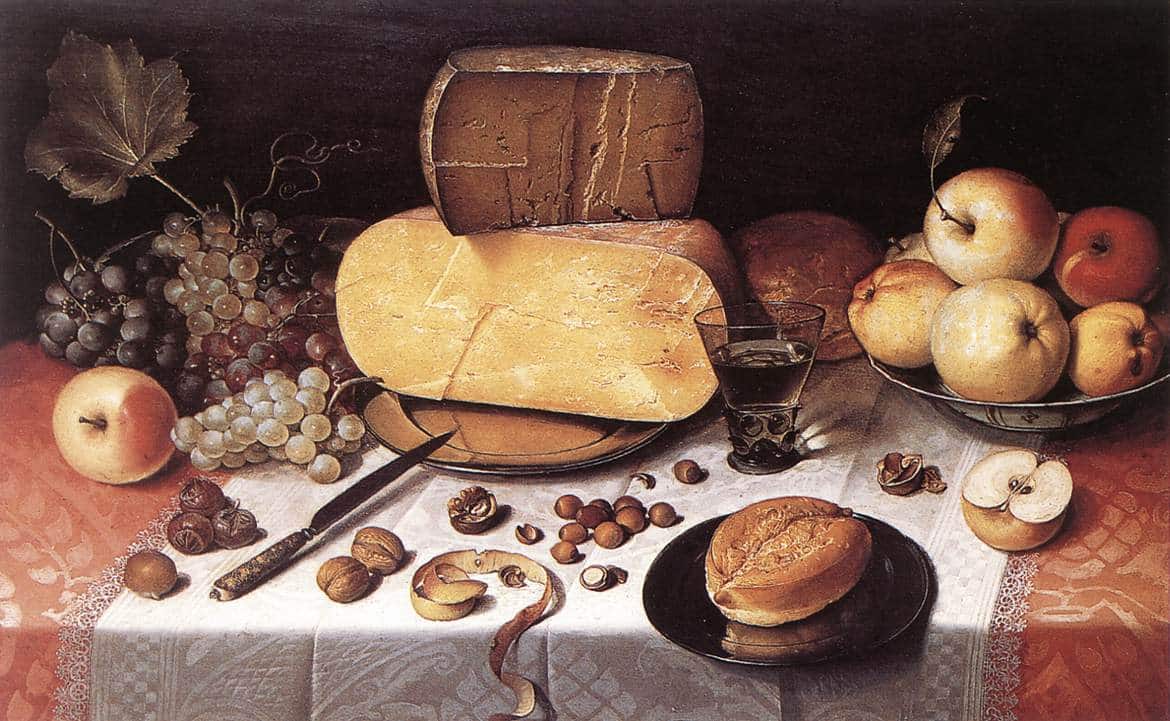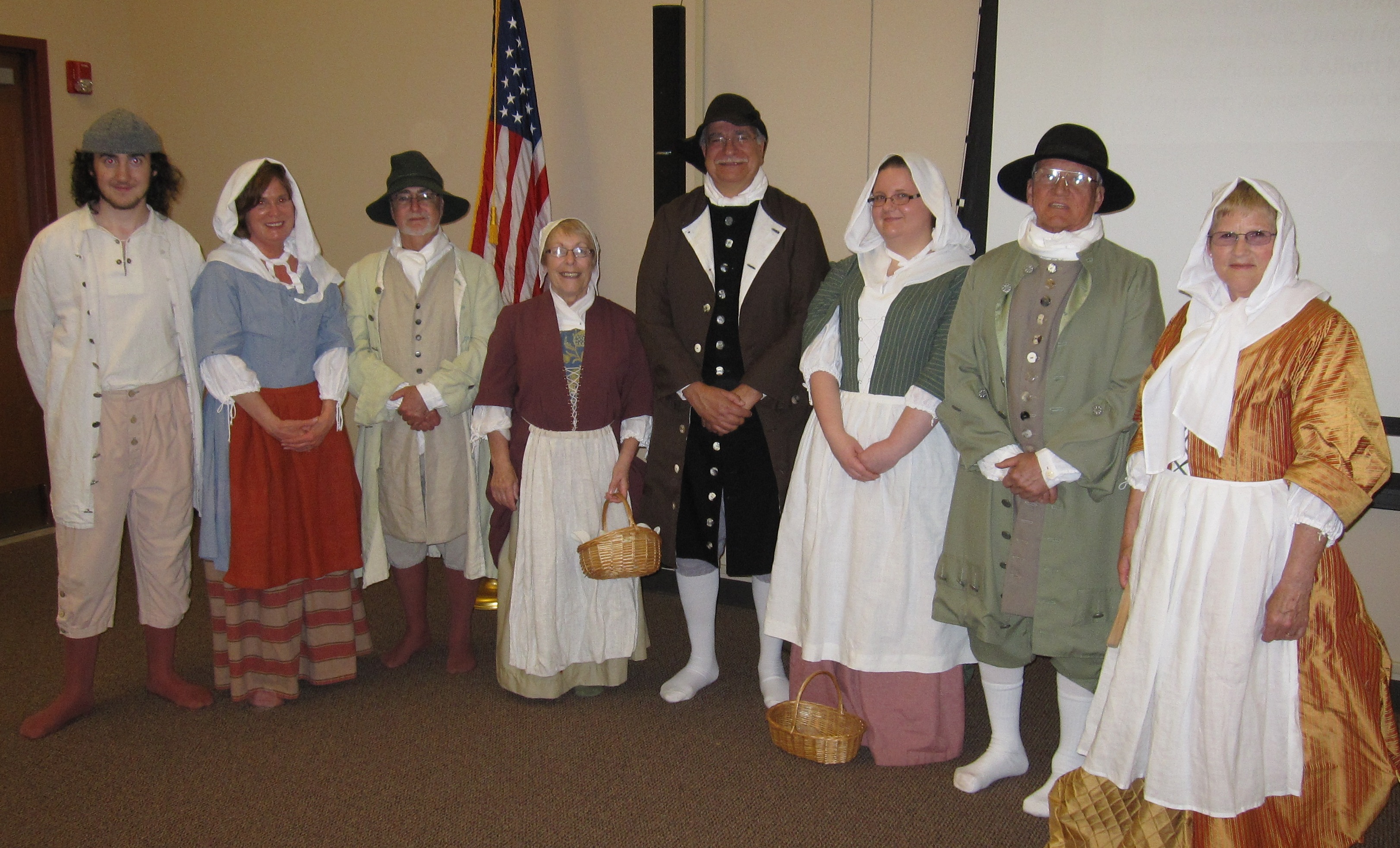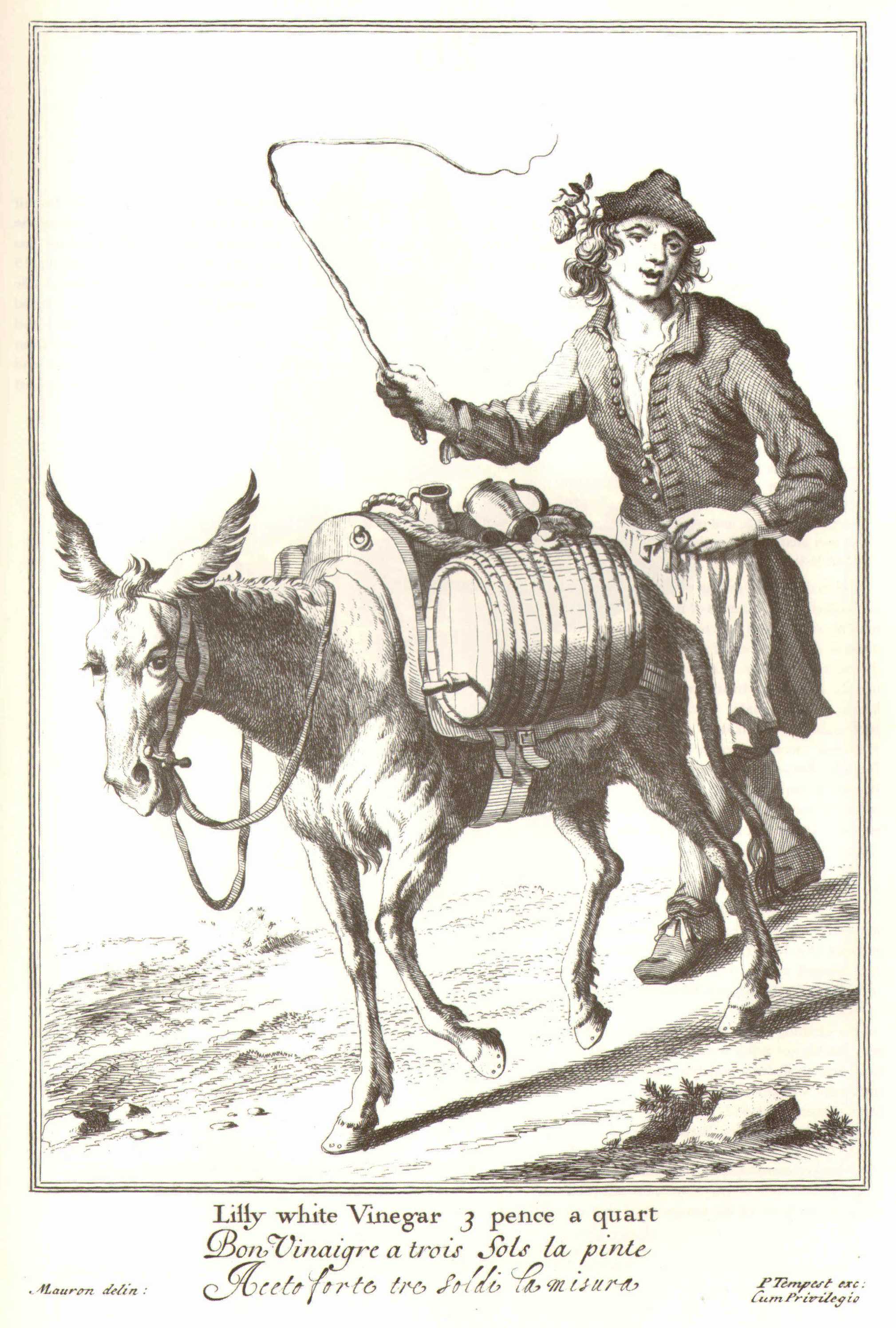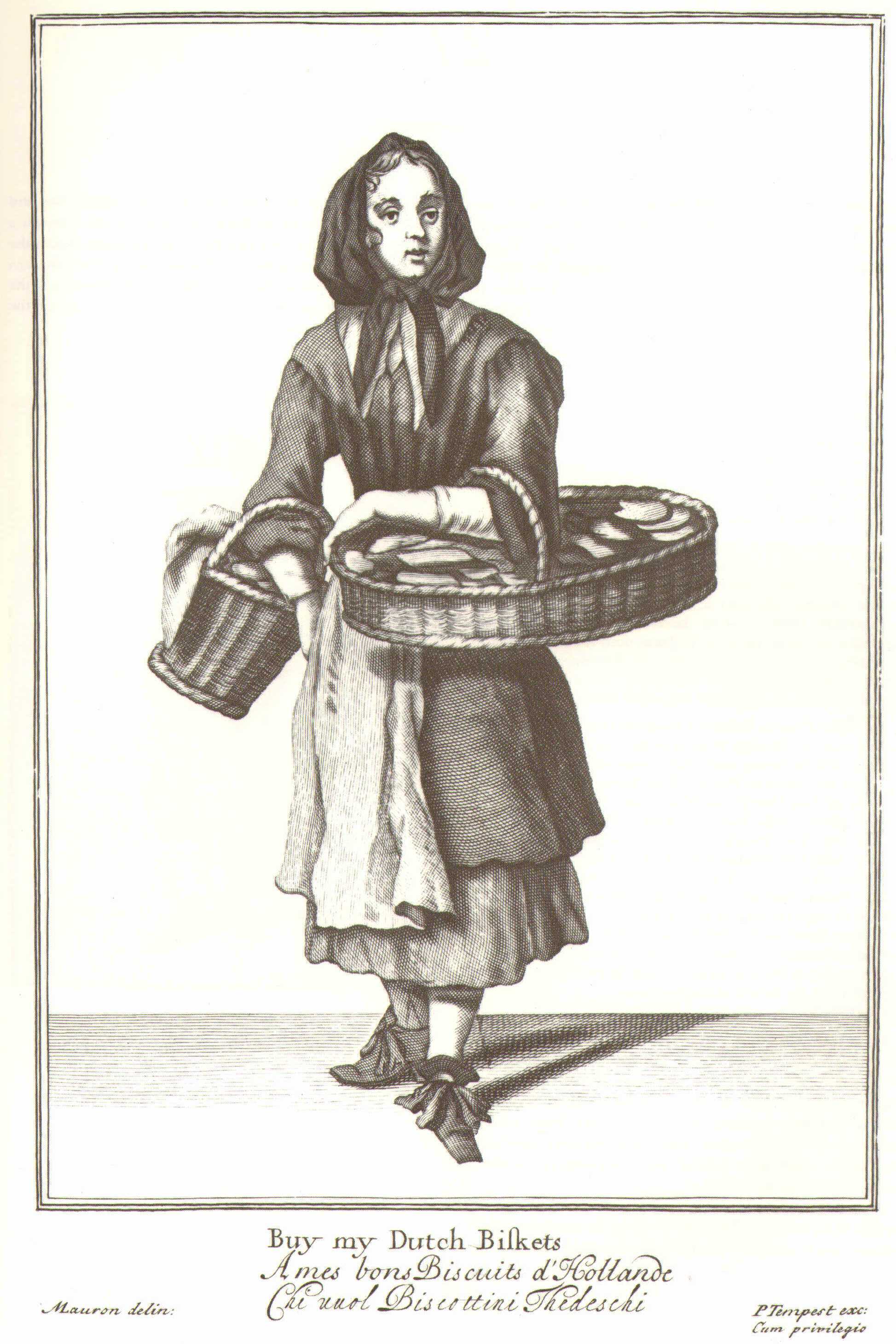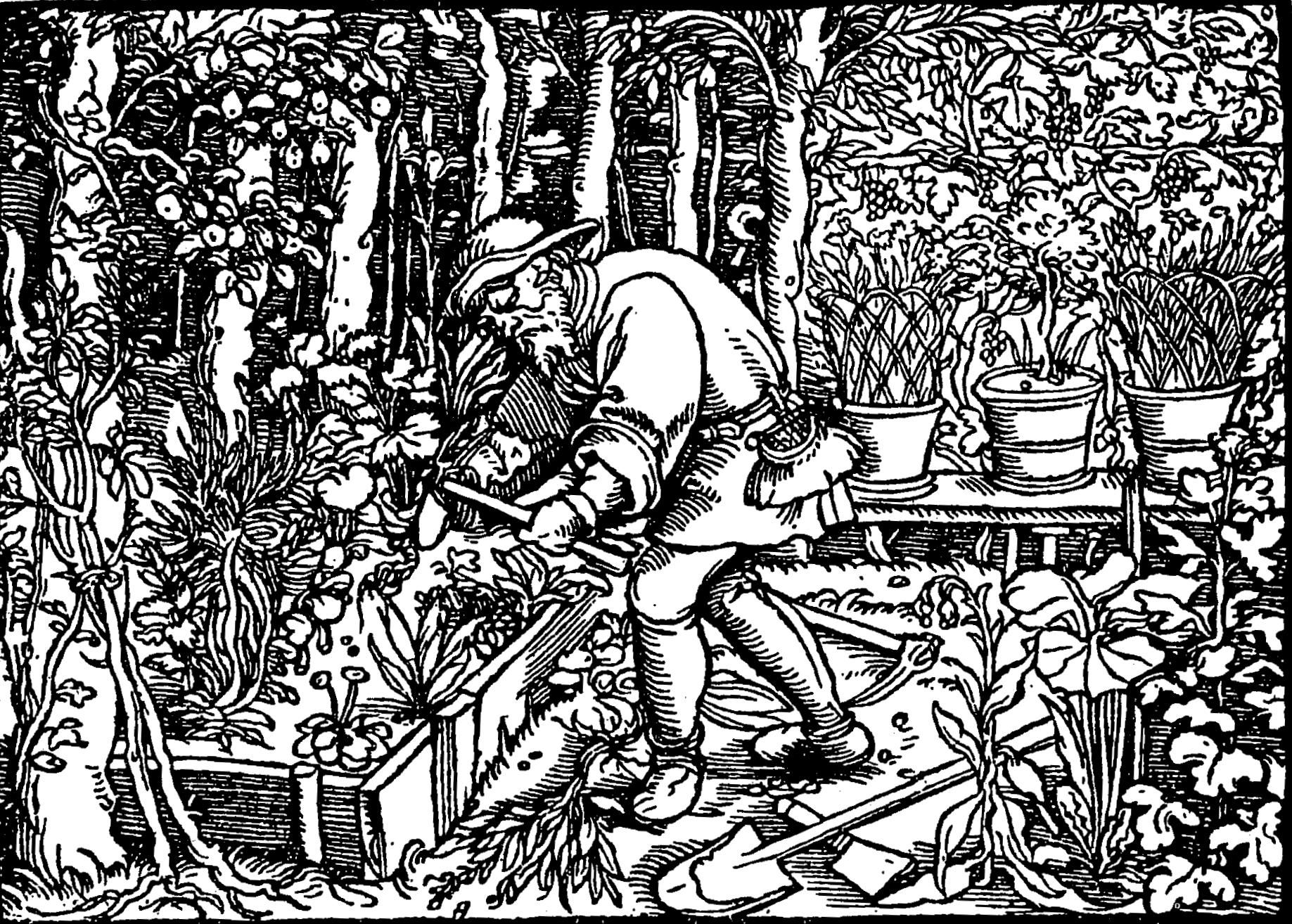A new feature in the garden this year was our rope hops walls. These large structures were created to support 12 new hops plants, which in the future will be used in our beer brewing demonstrations.
Our staff gardener Mike and his volunteers spent time this summer working on building two walls to grow the hops that will be used in our beer brewing program. The walls are each 12 ft high and 21 ft wide, with six plants at the base protected by stacked firewood boxes. We’ve been watching over the past month as the hops slowly creep up and the gardeners wrap new tendrils around the ropes, encouraging them to spread out and up the wall. This fall when the hops are matured, the entire frame can be taken down and the vines easily harvested.
It seems like craft beer brewing is all the rage these days, but it’s definitely not anything new! Beer brewing had long been a common activity in the home when colonists began arriving in Pennsylvania. For those who could afford a higher quality beverage, professional breweries quickly sprang into action, making Philadelphia a beer-brewing center in the New World. William Penn was known to purchase up to 20 barrels of beer a month from renowned brewer Henry Badcock and ship them up the Delaware to his country estate, Pennsbury Manor.
But for those who preferred to save their money, home brewing was easy and inexpensive. The two ingredients you need for a basic brew – barley and hops – could be grown in your Kitchen Garden. In fact, brewing your own beer would guarantee a ready supply of fresh yeast for baking in the kitchen. The brewing process involves bursts of activity followed by long periods of waiting, so it could be done in between other work in the kitchen.

By Hannah Howard, Volunteer & Special Project Coordinator

